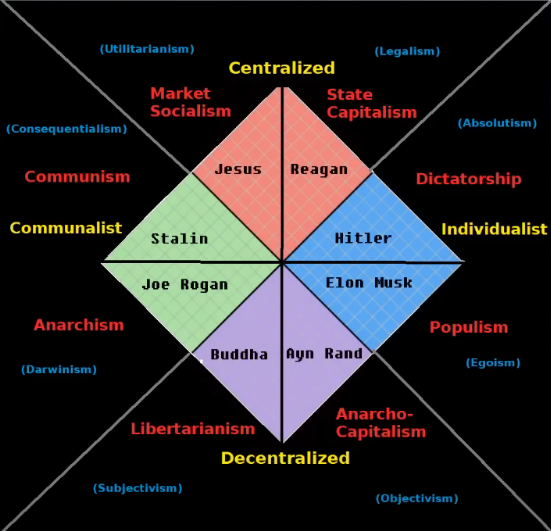
Interactive Electoral System (IES):
one vote, cast for any candidate at any time, able to be changed to any other candidate any time after that, with no deadline.
Interactive Legislative System (ILS):
one vote, cast by yourself or by any Official Proxy Candidate at any time, which can be changed at any time after that, with no deadline.
Guaranteed Term of Office (GTO):
- The Proxy with the most votes becomes the High Proxy (president/prime minister) only after they have secured the most votes for a 3-month period.
- If the current High Proxy secures more votes than the incumbent their GTO resets,
- If any Secondary Proxy (has some of the votes but not enough to win) secures more votes than the incumbent, the High Proxies GTO resets to 3 months.
High Proxy (HP):
- Has 2 Veto votes per proposal as well as 2 delay votes and 1 dismissal vote.
- Vetos delay voting for 1 month. The matter can still be discussed
- Delay votes delay the vote for 3 months. The matter can still be discussed
- Dismissal votes take the proposal off the table for a month, during which time he matter cannot be discussed.
- After a month it can be reexamined. Reexamined proposals cannot be dismissed again.
- These are useful when the population or the leadership (Prime, Secondary, and Minor Proxies) believe they need to have more information to decide on a matter.
Secondary Proxy (SP) (16% - 49% votes):
- Has 1 veto vote and 1 delay vote per proposal.
Minority Proxy (MP) (15% - 0.75 votes):
- Has 1 veto vote per proposal.
Representative Proxy (RP):
- representatives may be installed by communities which have the sole voting power on matters involving their community specifically. These have 2 delay votes per proposal
Household Proxy:
- The parents of a household each get 1 proxy vote per child, which can be used to vote on proposals.
- Household Proxy Votes do not stack, and can be used individually or given to an Official Proxy
Interactive Judicial System (IJS):
A complainant informs a judicial panel chair that another member, who shall be known as defendant, has allegedly acted inconsistently with applicable principles.
If the judicial panel chair believes that the alleged action or situation, if it was to occur or exist, could indeed be construed as a contravention of applicable principles, then the chair nation calls a hearing and informs the Chief of Justice.
The Chief of Justice may assign a different judicial panel chair to preside over the hearing, the most important consideration being that neither the complainant nor defendant has any reasonable grounds to view the chair to have any bias toward either party.
The defendant has the opportunity to have the hearing discontinued if the allegation is vexatious, scandalous, frivolous, or an abuse of court process.
The defendant chooses the size of the panel: 5, 7, or 9 members, including the chair.
The defendant and complainant each choose the same number of applicable members for the panel.
After all choices for panel members have been made, the defendant and complainant can each veto one of the other party’s choices.The chair chooses an alternate panel member for each veto, subject to rules provided by the applicable Justice Committee.
The panel hears both sides, including all evidence, relevant laws, reasoning, and witness testimony provided by either party.
The panel must come to a decision supported by at least 2/3 of its members.The panel chair must avoid voting on the final decision if at all possible unless there is absolutely no compromise possible, and the chair's vote will achieve the 2/3 threshold for a decision, in which case the chair must, whenever possible, only offer to vote in favor of a compromise between different desired outcomes, rather than pick either desired outcome in its entirety.